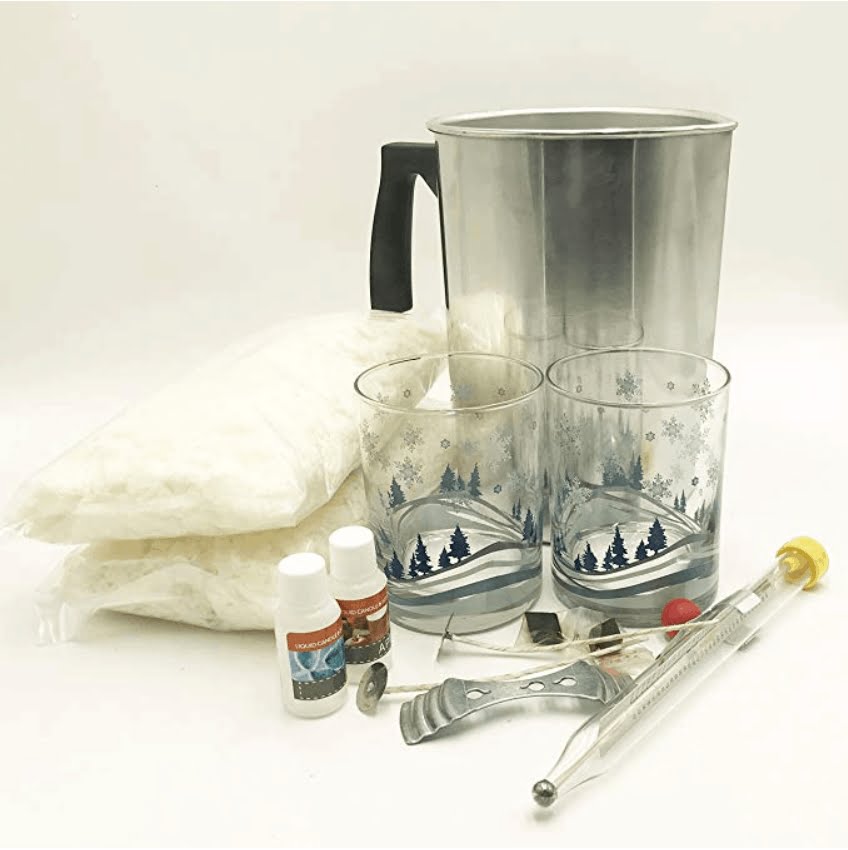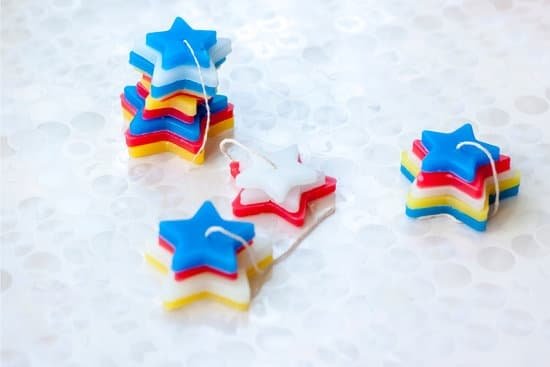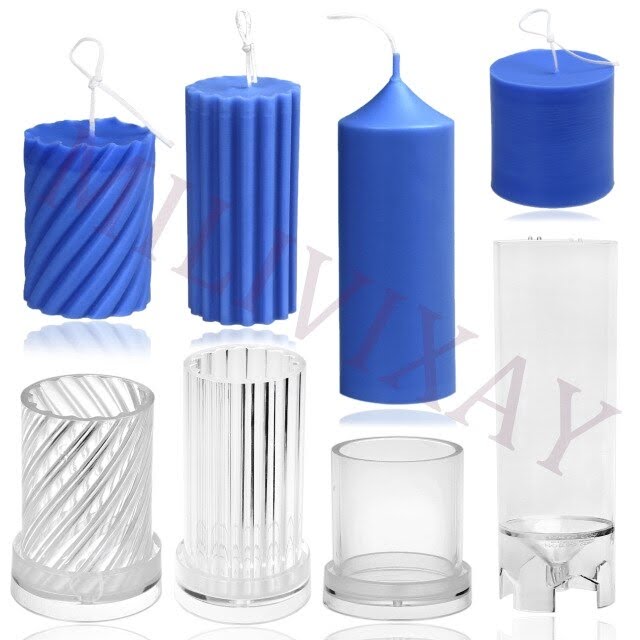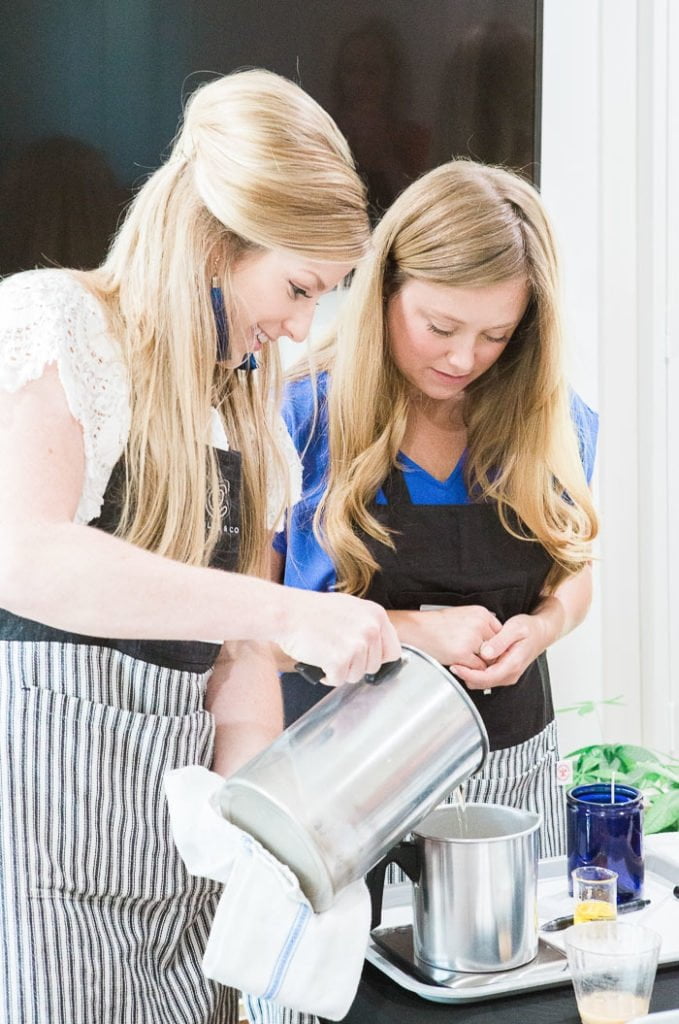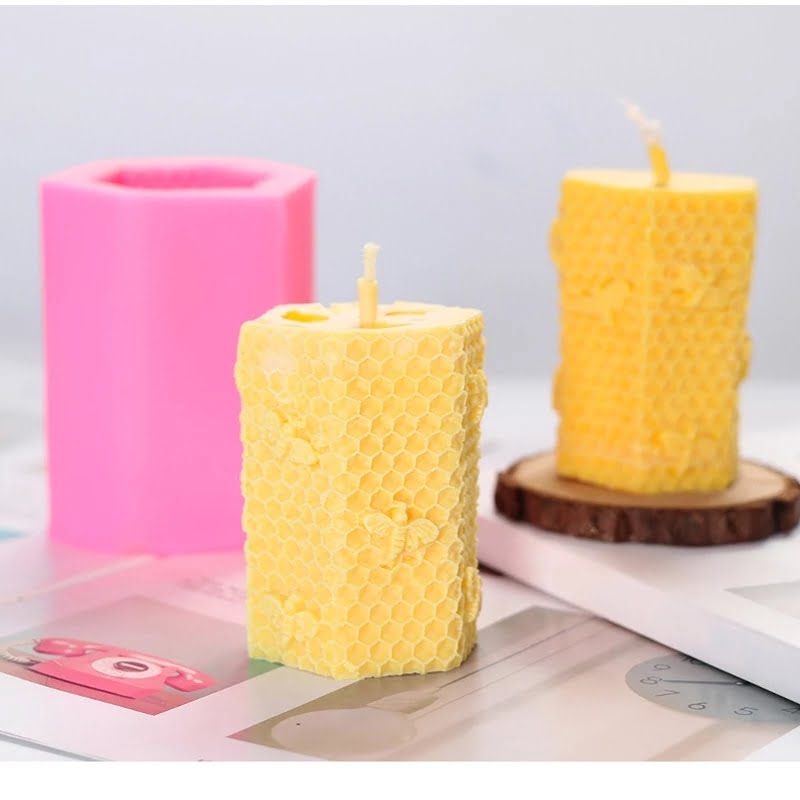Are you ready to try your hand at the art of candle making for the first time? Whether you’re looking for a new hobby or wanting to create personalized gifts, making your own candles can be a rewarding and enjoyable experience. In this article, we will guide you through the process of your first time candle making, from choosing the right supplies to troubleshooting any issues that may arise.
Candle making is an ancient art that has been practiced for centuries. From simple tapers to intricate designs, candles have played a role in ceremonies, religious rituals, and everyday life. Today, individuals are rediscovering the joy of creating their own candles, as it allows them to customize scents and colors while also providing relaxation and satisfaction.
In the following sections, we will provide you with a step-by-step guide on how to make your first candle, explore different types of wax and techniques, as well as offer tips on adding fragrance and color. Additionally, we will discuss common mistakes to avoid and how to troubleshoot any issues that may arise during the candle making process. So let’s dive in and discover the world of candle making together.
Choosing the Right Supplies for Your First Time Candle Making
When embarking on your first time candle making adventure, it’s essential to start with the right supplies. Choosing the proper supplies will ensure that your candles turn out beautifully and safely. Here are some important factors to consider when selecting supplies for your first time candle making experience.
The first thing you will need to decide on is the type of wax you want to use for your candles. There are several options available, including paraffin wax, soy wax, beeswax, and gel wax. Each type has its own unique characteristics, so it’s important to do some research and choose the one that best suits your needs and preferences.
In addition to wax, you’ll also need to select the appropriate wicks for your candles. Wicks come in various sizes and materials, and choosing the right ones is crucial for achieving a successful burn. It’s recommended to use cotton wicks for most candle making projects, as they tend to burn cleanly and evenly.
Another important consideration when choosing supplies for your first time candle making is containers. The container you choose will not only affect the aesthetic of your candle but also its burn quality. Make sure to select a heat-safe vessel that is specifically designed for candle making. Glass jars or tins are popular choices for container candles, as they allow the glow of the flame to shine through while providing a safe enclosure for the burning candle.
Understanding the Different Types of Wax for Candle Making
When it comes to candle making, choosing the right type of wax is crucial for the success of your first time candle making experience. There are several different types of wax to choose from, each with their own unique characteristics and benefits. To help you make an informed decision, here are some common types of wax used in candle making:
- Paraffin Wax: This is one of the most popular choices for candle making due to its affordability and ease of use. It has a high scent throw and can hold vibrant colors well.
- Soy Wax: Made from soybean oil, this natural wax is biodegradable and eco-friendly. It has a clean burn and excellent scent throw, making it a favorite among many candle makers.
- Beeswax: Known for its natural honey scent, beeswax is a premium choice for candle making. It has a long burn time and produces a bright flame.
- Coconut Wax: This type of wax is derived from coconut oil and is known for its creamy texture and excellent scent throw. It also has a clean burn with minimal soot.
Each type of wax has its own melting point, hardness, fragrance retention, and burn characteristics, so it’s important to consider these factors when choosing the right wax for your first time candle making project.
Once you have chosen the type of wax you want to work with, it’s important to pay attention to the melting point and pouring temperature to ensure that your candles set properly and have a smooth finish. Different waxes have different ideal pouring temperatures, so be sure to follow the manufacturer’s guidelines for best results.
In order to create high-quality candles during your first time candle making experience, it’s essential to understand the different types of wax available and how they can impact the performance of your candles. By carefully selecting the right type of wax for your project and following proper melting and pouring techniques, you can ensure that your first candles turn out beautifully and exceed your expectations.
Step-by-Step Guide to Making Your First Candle
Are you ready to embark on your candle making journey for the very first time? Making your own candles can be a fun and rewarding experience, and with the right guidance, you can create beautiful and unique candles to enjoy or give as gifts. In this section, we will provide a step-by-step guide to help you successfully make your first candle.
Gathering Your Supplies
The first step in making your own candle is gathering all the necessary supplies. You will need wicks, wax, a container for the candle, a double boiler or melting pot, a thermometer, fragrance oil (if desired), and coloring agents (if desired). Make sure to choose high-quality supplies that are specifically designed for candle making to ensure the best results.
Preparing Your Workstation
Once you have all your supplies ready, it’s time to set up your workstation. Cover the area with newspaper or an old cloth to protect surfaces from any potential spills or mess. Ensure that you have enough ventilation in the room and that there are no flammable items nearby. It’s also important to have a clean working space so that you can focus on creating your candle without any distractions.
Making Your Candle
Now that you’re all set up, it’s time to start making your candle. Begin by melting the wax in the double boiler or melting pot, making sure to monitor the temperature with a thermometer. Once the wax has reached the recommended temperature for adding fragrance and color, carefully add these elements according to their suggested amounts.
Next, dip the wick into the melted wax and place it at the center of your chosen container. Carefully pour the melted wax into the container, ensuring that the wick stays centered. Allow the candle to cool and harden before trimming the wick and enjoying your creation.
By following these steps and paying careful attention to detail, you can successfully make your first candle and begin your journey as a candle maker. With practice and experimentation, you may even discover new techniques and styles that suit your preferences. Happy candle making.
Tips for Adding Fragrance and Color to Your Candles
Adding fragrance and color to your candles can enhance the overall experience of candle making and bring a personal touch to your creations. Whether you want to create a soothing lavender-scented candle or a vibrant, colorful one, there are several tips to keep in mind for adding fragrance and color to your candles.
Choosing the Right Fragrance Oils
When selecting fragrance oils for your candles, it’s important to choose high-quality oils that are specifically designed for candle making. Look for oils that are highly concentrated and designed to disperse evenly throughout the wax when melted. Additionally, consider the scent throw – how far the fragrance will travel when the candle is burning – and choose scents that align with the purpose of your candle, whether it’s relaxation, energy, or ambiance.
Adding Color to Your Candles
There are various methods for adding color to your candles, including using liquid dyes, dye blocks, or natural colorants such as mica powder. It’s important to start with a small amount of colorant and gradually increase as needed, as some colorants can be very potent. Consider the type of wax you’re using when selecting colorants, as some may perform better in certain types of wax.
Experimenting With Scent and Color Combinations
Once you have a good understanding of adding fragrance and color individually, don’t be afraid to experiment with different combinations. Certain scents may work well with specific colors to create a cohesive theme for your candle. Keep track of your experiments by creating a journal or log so you can replicate successful combinations in the future.
By carefully choosing fragrance oils, selecting suitable colorants, and experimenting with different combinations, you can add personalized touches to your first time candle making experience and create beautiful custom candles that reflect your personal style and preferences.
Common Mistakes to Avoid for First Time Candle Makers
When you’re embarking on your first time candle making journey, it’s important to be aware of some common mistakes that can occur during the process. By knowing what to look out for, you can avoid potential pitfalls and create beautiful, safe candles.
One of the most common mistakes that first time candle makers make is not properly measuring the fragrance and color additives. It’s crucial to follow the recommended measurements provided in your candle making recipe or kit instructions. Adding too much fragrance oil can result in a candle that doesn’t burn properly, while too much color dye can affect the consistency of the wax.
Another mistake to avoid is not using the appropriate type of wax for your specific candle making technique. Different types of wax have different melting points and characteristics, so it’s essential to choose the right one for your desired outcome. Using the wrong wax can lead to issues such as poor scent throw, uneven burning, or excessive soot.
Additionally, a common mistake among first time candle makers is not allowing enough time for their candles to cure. Curing allows the fragrance and wax to bind together properly, resulting in a more even scent throw when the candle is burned. Rushing this process can lead to disappointment when your candles don’t perform as expected.
| Common Mistakes | Avoidance Tips |
|---|---|
| Improper measurement of fragrance and color additives | Follow recommended measurements provided in instructions |
| Using inappropriate type of wax | Choose appropriate wax based on desired outcome |
| Not allowing enough time for curing | Be patient and allow proper curing time for better performance |
Exploring Different Candle Making Techniques for Beginners
Candle making can be a fun and rewarding hobby, especially for beginners looking to explore different techniques. There are several candle making techniques that you can try for your first time candle making experience. One popular technique is container candles, which involves pouring melted wax into a container with a wick. This technique is great for beginners because it is relatively easy and does not require advanced equipment.
Another technique to explore is pillar candles, which are made by pouring wax into a mold and allowing it to harden. This technique allows for more creativity in terms of shape and design, but may require some practice to perfect the process. Dip and carve candles are also an interesting technique to try, where layers of colored wax are built up by repeatedly dipping a wick into melted wax, and then carving designs once the candle has cooled.
When exploring different candle making techniques, it’s important to start with the basics and gradually move on to more advanced methods as you gain experience. Each technique has its own set of challenges and rewards, so don’t be afraid to experiment and find what works best for you.
| Technique | Description |
|---|---|
| Container Candles | Pouring melted wax into a container with a wick |
| Pillar Candles | Pouring wax into a mold and allowing it to harden |
| Dip and Carve Candles | Building up layers of colored wax by repeatedly dipping a wick into melted wax, then carving designs once cooled |
Troubleshooting and Solutions for First Time Candle Making
When you’re embarking on your first time candle making journey, it’s important to be prepared for potential challenges that may arise during the process. Troubleshooting and finding the right solutions are essential to ensure the success of your candle making venture. Here are some common issues that first time candle makers may encounter, along with tips on how to address them.
One of the most common problems that beginners face is uneven burning in their candles. This can be caused by a variety of factors, such as using the wrong type of wick or not pouring the wax at the correct temperature.
To troubleshoot this issue, consider using a different type of wick that is better suited for the specific type of wax you are using. You can also try pouring your wax at a slightly higher temperature to see if that improves the evenness of the burn.
Another issue that first time candle makers often encounter is air bubbles forming in the wax as it cools. These air bubbles can create unsightly blemishes on the surface of your candles.
To prevent this problem, make sure to slowly and carefully pour your wax into the container, tapping it gently to release any trapped air bubbles. If air bubbles still appear, you can use a heat gun to carefully melt the top layer of wax and smooth out any imperfections.
Additionally, fragrance throw and color intensity are also common concerns for beginners. If you find that your scented candles aren’t emitting enough fragrance, try using a higher concentration of fragrance oil next time. For color issues, experiment with different types and amounts of dye to achieve the desired hue in your candles.
By being aware of these potential issues and armed with these troubleshooting tips and solutions, you can confidently tackle any challenges that may come up during your first time candle making experience. Don’t be discouraged by setbacks – learning from them will only make you a better candle maker in the long run.
Conclusion
In conclusion, embarking on your first time candle making journey can be both exciting and rewarding. As you have learned, there are various types of wax, supplies, and techniques to consider when making your own candles. By following the step-by-step guide provided in this article, you can create a beautiful and personalized candle that reflects your unique style and preferences.
Adding fragrance and color to your candles can further enhance the experience, allowing you to create a truly one-of-a-kind product. Whether you prefer soothing lavender scents or vibrant colorful designs, the options are endless when it comes to customizing your candles.
While there may be some common mistakes to avoid and troubleshooting along the way, the joy of creating your own candles for the first time is well worth the effort. The sense of accomplishment and pride that comes with lighting a candle that you made yourself is incomparable. So go ahead, gather your supplies, unleash your creativity, and enjoy the wonderful journey of first time candle making.
Frequently Asked Questions
How Do You Start Making Candles for Beginners?
To start making candles as a beginner, you will need to gather the necessary materials and equipment such as wax, wicks, fragrance oils, a double boiler, and a thermometer. Choose a simple candle-making method like container candles to begin with.
How Do You Start Off Making Candles?
When starting off making candles, it’s important to familiarize yourself with the different types of wax available such as paraffin, soy, and beeswax. Research different candle-making techniques and pick one that matches your skill level and resources.
What Is the Best Wax for Beginner Candle Maker?
The best wax for beginner candle makers is generally soy wax. Soy wax is easy to work with, has a lower melting point than other waxes, and has minimal shrinkage after cooling. It also produces clean-burning candles that hold fragrance well.

Welcome to my candle making blog! In this blog, I will be sharing my tips and tricks for making candles. I will also be sharing some of my favorite recipes.

